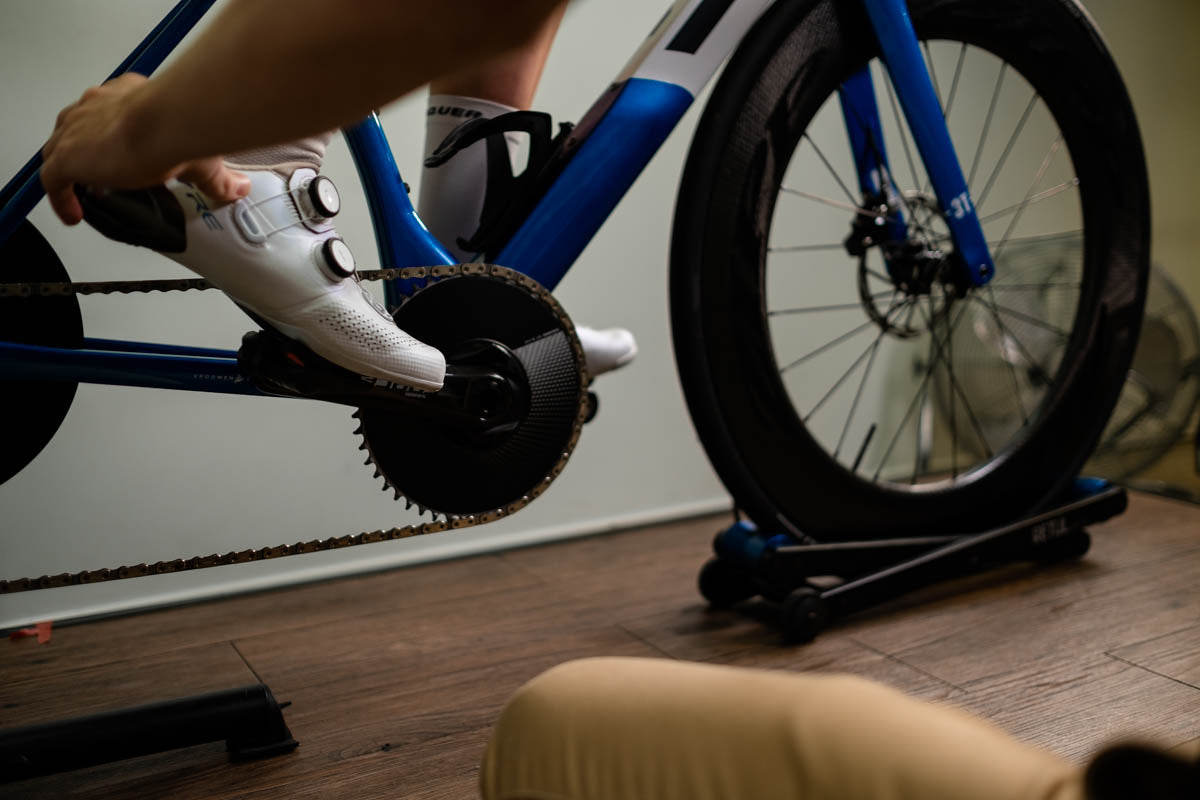We get asked this question all the time in our clinic and online. If you’ve never worn a cycling orthotic that feels like it should, it’s the first logical question. However, if you have, it becomes a question of “why wouldn’t I wear them?” or more often than not, a staunch position of never wanting to ride again without them.
A simplistic way to visualise what the perfect orthotic would do in a cycling shoe is to first imagine what your footprint would look like in sand. Odds are that this shape isn’t completely flat and void of any contours in both directions from heel to toes and across the foot laterally. If you take a look inside most cycling shoes once you take out the standard innersole, you’ll find that generally they’re fairly flat and hard. If you sit the innersoles on a flat surface and push your palm down into the arch you’ll probably find that they don’t put up much of a fight and flatten out with minimal force. The inside walls of the shoe that connect the sole to the Boas or straps that tighten up the top will provide some resistance to this movement but often not much.
Out on a ride for a couple of hours your foot will be pressing into the sole of this shoe roughly 10000 times. The soles of your feet are highly tuned to be sensitive and give you lots of feedback for balance and pressure. Due to this, they have one of the highest densities of sensory nerve endings in the body. In essence, these soft bags of bones that are remarkably sensitive are often constricted or being mashed into the pedals thousands of times in a very repetitive way for hours at a time.
Now, if we go back to visualising our foot shape. Those deepest areas of the footprint are likely the balls of your feet (where your toes connect to your metatarsal bones) and your heel. When you’re pedalling in a stiff shoe, the pressure is going to be going primarily through the front two thirds of the shoe with the heel not being as highly loaded. An effective and comfortable orthotic will allow the foot when pedalling to be pressing against a larger surface area and therefore reduce the peak amount of pressure through some of the more sensitive areas of the foot that can cause hot foot and numbness.
If you want to get more technical, Pressure = Force/Area. By increasing the effective contact area of the foot in your pedal stroke we can reduce the peak pressure in some of these more touchy areas. Downward force on the foot from your pedal stroke and gravity is going to generally remain within a window and not change too vastly. So, in order to reduce high pressure areas that can cause transient numbness and hot foot we want to increase the area, thereby reducing the pressure. Think of poking yourself in the chest with one finger using 5kg of force versus pushing just as hard but using the whole palm of your hand.
That all sounds good, but then to not ruin your (hopefully) appropriately fitting shoe the orthotic needs to exist inside without taking up any more space in the toebox area and be light enough for you to forget it’s in there.
That’s what the perfect cycling orthotic should feel like; connected and comfortable, but so good that you almost forget that they’re in there until the next time you put them on. This is why we offer thin (2mm) and standard (4mm) thickness devices as well as multiple arch profiles, to ensure Cobra9s are more than just a placebo and actually are the business.





Leave a comment
This site is protected by hCaptcha and the hCaptcha Privacy Policy and Terms of Service apply.